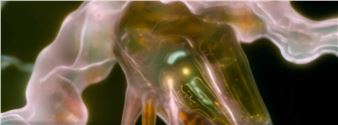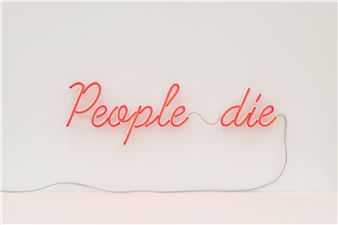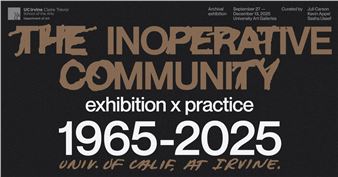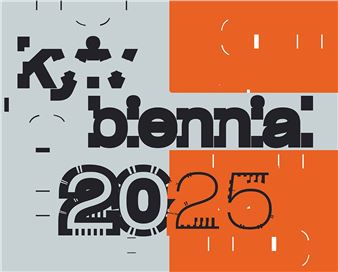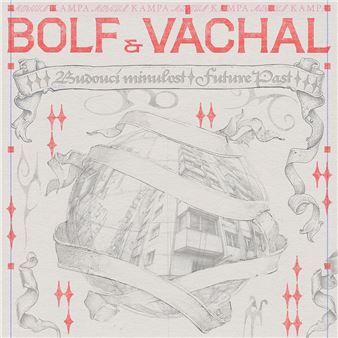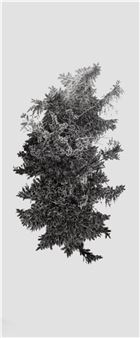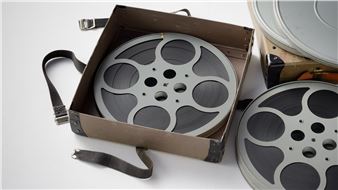Ewa Partum & Lenka Klodová: Disobedient Bodies
Hunt Kastner is very pleased to present an exhibition that examines the practice of two feminist artists, Ewa Partum (b. 1945, Grodzisk Mazowiecki) and Lenka Klodová (b. 1969, Opava), who share a focus on liberating women from constraints, stereotypes and oppression, albeit working with different aesthetics. From a broader perspective, the exhibition focuses on time-specific feminist struggles in East Central Europe during the periods of socialism and neoliberalism and stages a productive dialogue between the work of Partum and Klodová.
The artistic practices of both artists have emerged from different disciplines and artistic contexts: Ewa Partum’s work stems from a critique of painting and conceptual art in the late 1960s, and Lenka Klodová’s from the discourse of extended sculpture and radical identity-based art characteristic of the period of political transformation in the 1990s. Both artists have arrived at employing their own bodies as artistic tools in their performative works. With radically different aesthetics, they explore feminist issues related to the constructed divisions between the private and public spheres in relation to their own bodies, roles and stereotypes of women, as well as the supposedly universal and genderless language of art. They address topics such as the relationship between motherhood and artistic practice and use their art towards a rising feminist conscience. In their biopolitical works, in which they have appropriated administrative language, they show how the apparatus of the state determines the status of gendered bodies.
The notion of “disobedient bodies” in the title of the exhibition refers to the main tool of Partum and Klodová’s artistic practice – the naked female body that subverts existing social and visual orders. It is a body used beyond the conventions of traditional art, where it has been an object of the male gaze rather than an active subject of transformative action. In her work, Luncheon on the Grass (1971), reconstructed for the exhibition, Ewa Partum refers to Eduard Monet’s famous painting depicting a female nude figure deprived of any mythological or symbolic alibi. Partum has translated the famous painting into an action in which her name confidently overwrites that of the modern art master. Her performances Change (1974 and 1979), on the other hand, show how the artist established the body as an artistic tool to protest social and artistic exclusions. The exhibition also includes a series of unique vintage photographs documenting the performance Wedding Attire, shown for the first time since it was realised in 1981. In this work, Ewa Partum exposes the institution of marriage as a patriarchal social convention and defines it as a source of oppression for women. She uses a self-created feminist slogan on the banner, which reads: “Women, marriage is against you!” Other works relating to the institution and ritual of marriage (Private Performance, 1985, Marriage Disasters, 1985) move from the symbolic and representational level to an exploration of Partum’s actual lived experience.
A similar tension between the private and public, as well as representation and action, can be traced in the work of Lenka Klodová. In her early work Golden Kids (1996), the artist delegated the performance to her own children Matouš and Božena, dressed in golden suits freely playing in the environment of the sculpture studio. Her own embodied experience, as well as the limitations of the performing body, have been recorded in the series entitled Library (2021), plaster casts of the artist’s torso, holding stacks of books on the subjects of female transition, divorce, and cancer. Objective scientific narratives are stored between the breasts, testifying to the actual knowledge of an individual experiencing body. In many of her works, Klodová explores specific and culturally marginalised female experiences, such as pregnancy. She does not show this stage passively but puts the pregnant bodies into action, often in an absurd context, as in the installation Demonstration (2004). The strategy of subversive representation is central to Klodová’s work. In Libát/Kiss (2006), an installation of manipulated advertising posters, blown-up lips of women kiss the window from the inside. This work, juxtaposed with Ewa Partum’s poems by ewa from the early 1970s, shows a unity of feminist aims between both artists, but it also reveals a different set of references. In Klodová’s case, it is a sexist visual culture and the intrusive aggression of advertising and stereotyped femininity that she challenges in her work; in Partum’s case, it is the seemingly universal genderless subject of conceptual art.
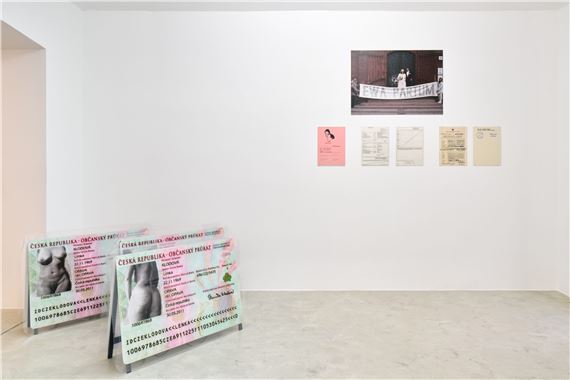
Recommended for you
Hunt Kastner is very pleased to present an exhibition that examines the practice of two feminist artists, Ewa Partum (b. 1945, Grodzisk Mazowiecki) and Lenka Klodová (b. 1969, Opava), who share a focus on liberating women from constraints, stereotypes and oppression, albeit working with different aesthetics. From a broader perspective, the exhibition focuses on time-specific feminist struggles in East Central Europe during the periods of socialism and neoliberalism and stages a productive dialogue between the work of Partum and Klodová.
The artistic practices of both artists have emerged from different disciplines and artistic contexts: Ewa Partum’s work stems from a critique of painting and conceptual art in the late 1960s, and Lenka Klodová’s from the discourse of extended sculpture and radical identity-based art characteristic of the period of political transformation in the 1990s. Both artists have arrived at employing their own bodies as artistic tools in their performative works. With radically different aesthetics, they explore feminist issues related to the constructed divisions between the private and public spheres in relation to their own bodies, roles and stereotypes of women, as well as the supposedly universal and genderless language of art. They address topics such as the relationship between motherhood and artistic practice and use their art towards a rising feminist conscience. In their biopolitical works, in which they have appropriated administrative language, they show how the apparatus of the state determines the status of gendered bodies.
The notion of “disobedient bodies” in the title of the exhibition refers to the main tool of Partum and Klodová’s artistic practice – the naked female body that subverts existing social and visual orders. It is a body used beyond the conventions of traditional art, where it has been an object of the male gaze rather than an active subject of transformative action. In her work, Luncheon on the Grass (1971), reconstructed for the exhibition, Ewa Partum refers to Eduard Monet’s famous painting depicting a female nude figure deprived of any mythological or symbolic alibi. Partum has translated the famous painting into an action in which her name confidently overwrites that of the modern art master. Her performances Change (1974 and 1979), on the other hand, show how the artist established the body as an artistic tool to protest social and artistic exclusions. The exhibition also includes a series of unique vintage photographs documenting the performance Wedding Attire, shown for the first time since it was realised in 1981. In this work, Ewa Partum exposes the institution of marriage as a patriarchal social convention and defines it as a source of oppression for women. She uses a self-created feminist slogan on the banner, which reads: “Women, marriage is against you!” Other works relating to the institution and ritual of marriage (Private Performance, 1985, Marriage Disasters, 1985) move from the symbolic and representational level to an exploration of Partum’s actual lived experience.
A similar tension between the private and public, as well as representation and action, can be traced in the work of Lenka Klodová. In her early work Golden Kids (1996), the artist delegated the performance to her own children Matouš and Božena, dressed in golden suits freely playing in the environment of the sculpture studio. Her own embodied experience, as well as the limitations of the performing body, have been recorded in the series entitled Library (2021), plaster casts of the artist’s torso, holding stacks of books on the subjects of female transition, divorce, and cancer. Objective scientific narratives are stored between the breasts, testifying to the actual knowledge of an individual experiencing body. In many of her works, Klodová explores specific and culturally marginalised female experiences, such as pregnancy. She does not show this stage passively but puts the pregnant bodies into action, often in an absurd context, as in the installation Demonstration (2004). The strategy of subversive representation is central to Klodová’s work. In Libát/Kiss (2006), an installation of manipulated advertising posters, blown-up lips of women kiss the window from the inside. This work, juxtaposed with Ewa Partum’s poems by ewa from the early 1970s, shows a unity of feminist aims between both artists, but it also reveals a different set of references. In Klodová’s case, it is a sexist visual culture and the intrusive aggression of advertising and stereotyped femininity that she challenges in her work; in Partum’s case, it is the seemingly universal genderless subject of conceptual art.

 ARTISTS
ARTISTS







